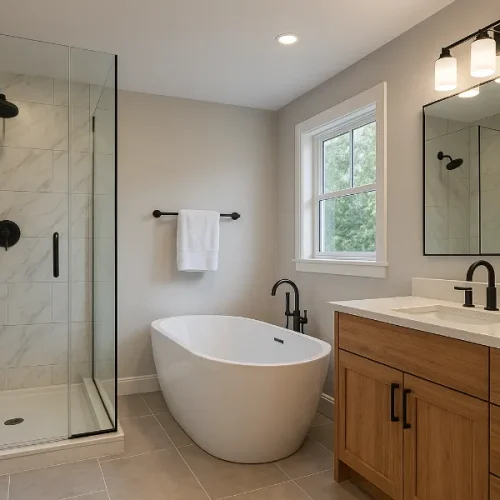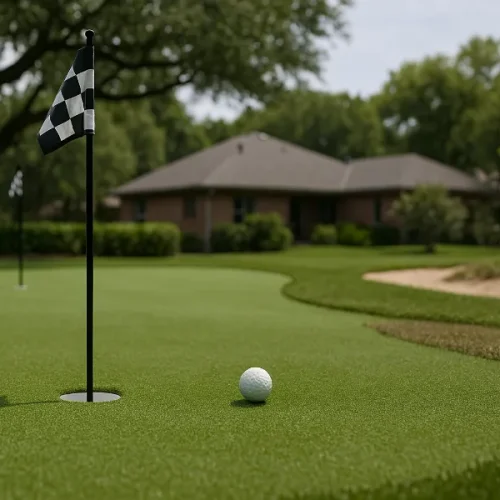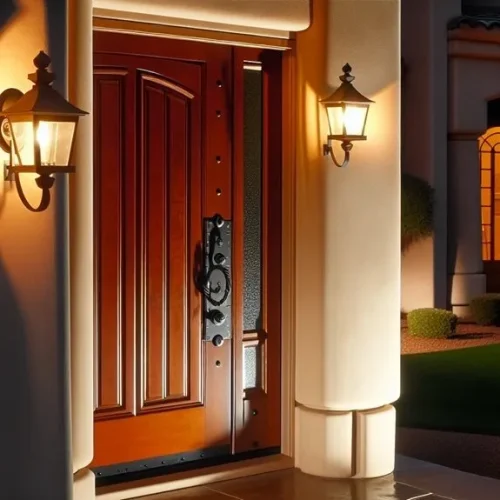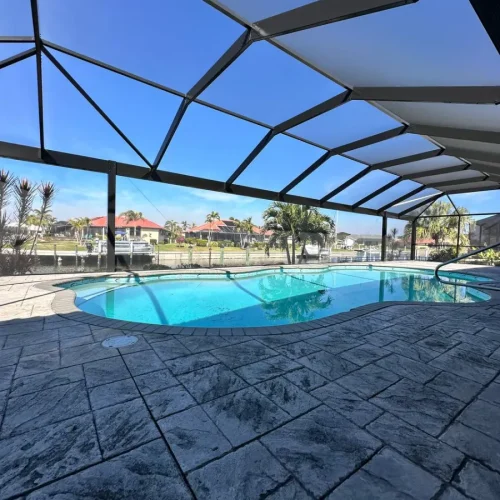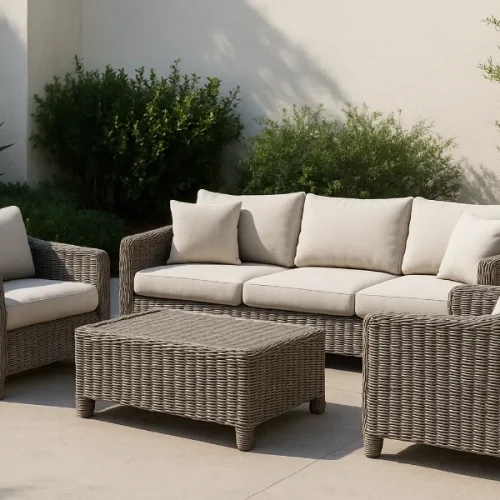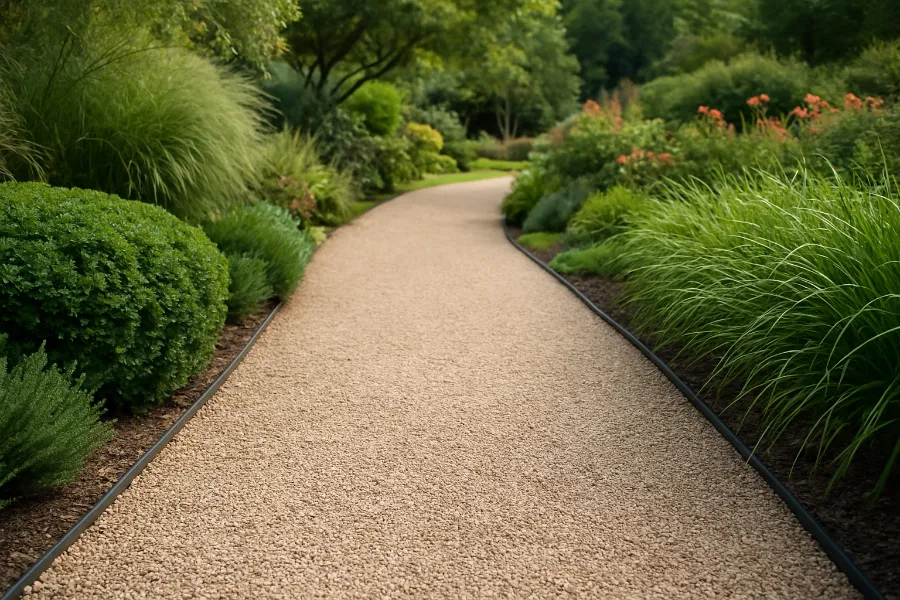
Low-maintenance garden walkways are the quiet backbone of outdoor design. They guide movement, protect growing areas, and define the mood of your landscape. Many homeowners want paths that look good but don’t require hours of upkeep. The good news: choosing the right walkway materials and layout can significantly reduce long-term maintenance. With careful planning, walkways can stay neat, attractive, and functional with very little yearly attention.
This guide explores durable, stylish, low-maintenance garden walkway ideas. The goal is not only to make your garden easier to care for, but also a space that feels inviting and enjoyable to walk through.
Understanding What Makes a Walkway Low-Maintenance
A low-maintenance walkway avoids constant weeding, frequent repairs, material breakdown, and resurfacing. To achieve this, materials should be stable underfoot, resistant to weathering, and supported by a proper foundation.
Common characteristics of a low-maintenance walkway:
• Uses long-lasting or slow-wearing materials
• Has edging that reduces grass spread and gravel drift
• Allows water drainage to prevent puddles or erosion
• Requires only simple sweeping or occasional topping off
Idea 1: Classic Gravel Paths
Gravel walkways are simple, practical, and adaptable. They fit gardens ranging from cottage-style to minimalist designs and are easy to refresh over time.
Benefits:
• Affordable materials and installation
• Naturally drains rainwater
• Can be shaped into curves and soft garden lines
Best gravel types:
• Pea gravel for a soft, natural look
• Crushed stone or decomposed granite for compacting
• Limestone gravel for a light-colored finish
How to keep it low-maintenance:
• Install landscape fabric under gravel to discourage weeds
• Compact your base layer to prevent sinking
• Use metal, stone, or brick edging to prevent gravel from migrating into lawn or beds
Edging is especially important. Without a boundary, gravel spreads and the path can look messy. Even simple steel edging creates clean, lasting definition.
Idea 2: Large Stepping Stones with Groundcover
Stepping-stone walkways bring a relaxed, natural look to gardens. They’re great for winding paths and can feel almost like they are growing out of the landscape. Many gardeners fill the gaps with either low groundcover or fine gravel.
Groundcover options:
• Creeping thyme
• Dwarf mondo grass
• Irish moss (for cooler, shaded regions)
To keep maintenance minimal, choose slow-spreading plants so trimming and shaping remain minimal. For extremely low maintenance, skip plants entirely and fill joints between stones with decomposed granite or fine gravel.
Tips:
• Set stones firmly so they don’t wobble
• Space stones for natural stepping stride
• Avoid fast-spreading groundcovers if you want fewer trimming chores
Idea 3: Mulch Walkways
Mulch walkways blend into natural gardens beautifully. They are soft underfoot, visually calm, and perfect for woodland-style yards. While mulch does need occasional replenishing, it’s still easier to maintain than materials that crack or require leveling.
Advantages:
• Simple installation
• Helps moderate soil temperature and retain moisture
• Blends seamlessly with planting beds
Choose hardwood mulch, bark chips, or pine nuggets for longer-lasting coverage. Lighter and finer mulches decompose too quickly and may need more frequent replacement.
Maintenance routine:
• Refresh mulch annually by adding a thin new layer
• Use edging to prevent drift into lawns
• Avoid deep mulch layers to prevent soggy soil
Idea 4: Concrete Pavers
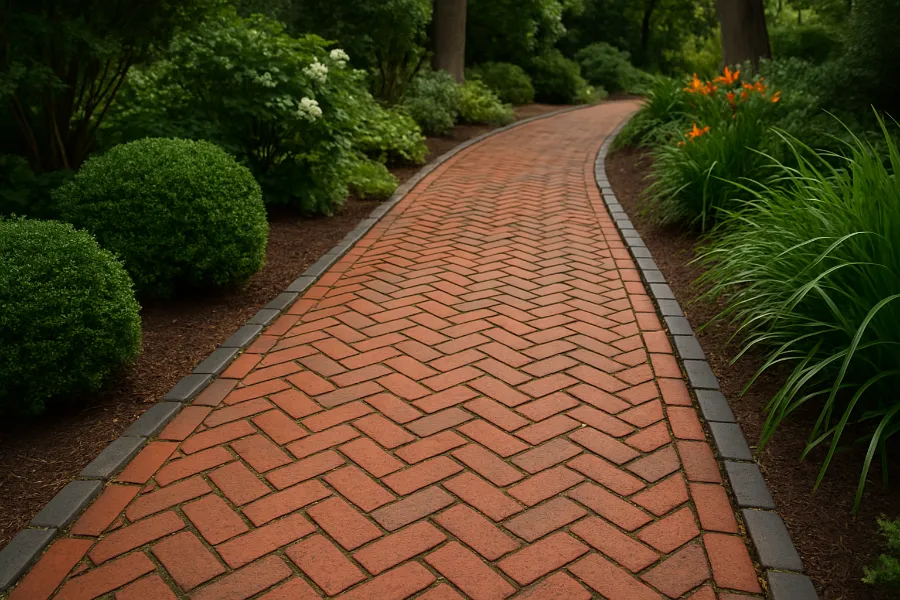
Concrete pavers create clean, stable walkways that require little upkeep. Modern pavers come in smooth, textured, and stone-look designs to match many garden styles.
Benefits:
• Very durable and stable
• Easy to sweep and clean
• Works in both formal and modern landscapes
Use polymeric sand between pavers to minimize weeds. This sand hardens slightly when moistened, locking joints and preventing seeds from taking root.
Idea 5: Flagstone Walkways
Flagstone has a natural, timeless feel. Each stone has unique color variation and pattern, creating a walkway with character. Flagstone performs best when installed on compacted gravel or decomposed granite.
Advantages:
• Long-lasting and weather-resistant
• Looks organic in gardens with shrubs and perennials
• Works well in curved walkway designs
For lower maintenance, avoid planting fast-spreading groundcover between stones. Instead, use gravel or compactable fines to keep the surface tidy.
Idea 6: Brick Walkways
Brick walkways have a cozy, traditional charm. They are especially fitting for cottage gardens, colonial homes, and older landscapes with mature trees.
How to keep maintenance low:
• Lay bricks on compacted sand or gravel for stability
• Fill joints with polymeric sand to discourage weeds
• Use edging to prevent shifting over the years
Brick patterns like herringbone can add extra strength and detail.
Idea 7: Permeable Grid Walkways
Permeable paver grids are a sustainable alternative to more traditional walkways. These grid systems are filled with gravel, stone, or even low-growing groundcover.
Best for:
• Gardens in rainy climates
• Driveway-to-walkway transitions
• Eco-friendly or drought-conscious landscapes
Permeable systems allow water to move into the soil rather than running off, supporting healthier garden ecology.
The Importance of Edging
Edging is one of the simplest ways to reduce long-term walkway maintenance. Without it, grass spreads, mulch drifts, and gravel scatters.
Low-maintenance edging options:
• Steel edging for clean, modern lines
• Stone blocks or bricks for structure
• Large smooth river rocks for a natural feel
Edging height can be flush with the walkway or slightly raised depending on the material being contained.
General Low-Maintenance Design Strategies
- Follow natural walking patterns instead of forcing a route.
- Make paths wide enough (2.5–4 feet) to avoid brushing plants.
- Consider drainage carefully; avoid walkways that collect water.
- Choose materials suited to your climate so they weather predictably.
For more context on common paving and landscape materials, the Wikipedia article on paving stones provides helpful background on typical constructions and uses.
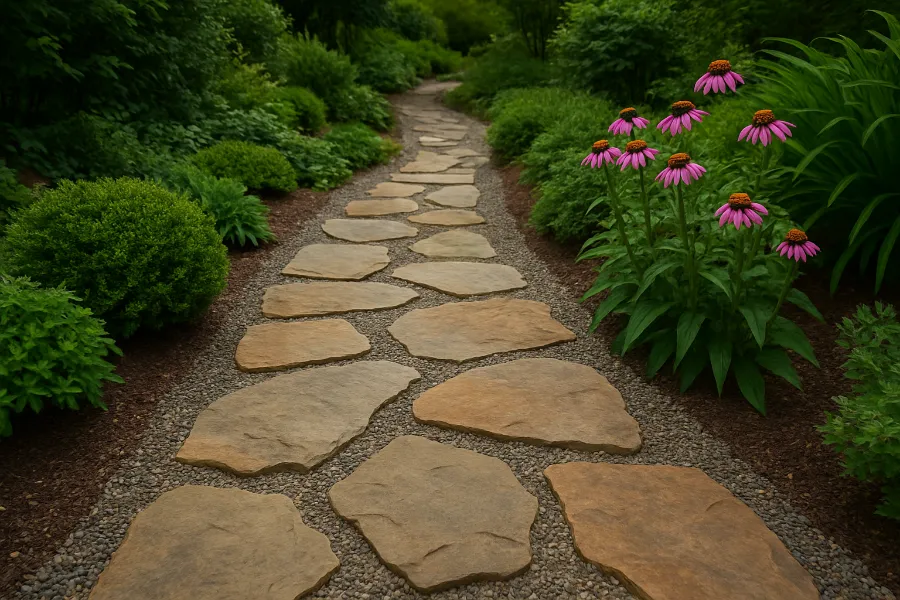
Conclusion
Low-maintenance garden walkways are built on thoughtful material selection, smart layout, and a stable foundation. Whether you prefer the simple texture of gravel, the structure of pavers, the organic beauty of flagstone, or the natural softness of mulch, the key to easy upkeep is preparation and edging.
A well-designed walkway invites exploration, complements your plants, and remains pleasant to use and admire year after year, without requiring constant attention. With the right approach, your garden path can be both beautiful and refreshingly easy to maintain.
FAQs
Gravel and concrete pavers are among the easiest because they resist weathering and require minimal upkeep.
Yes. A compacted gravel or sand base helps prevent shifting, sinking, and weed growth.
Use landscape fabric under gravel walkways or fill paver joints with polymeric sand to block weed seeds.
Permeable surfaces like gravel, decomposed granite, and permeable pavers handle rain and drainage well.
Mulch can shift in heavy rain, so edging helps keep it in place. Hardwood mulch lasts longer than softwood mulch.
Yes, as long as they are spaced properly and set into a stable base to prevent wobbling.
Steel, stone, or brick edging keeps gravel from spilling into grass or garden beds.
Typically 2.5 to 4 feet wide so it feels comfortable to walk without brushing plants.
Choose slow-growing groundcovers such as dwarf mondo grass or creeping thyme to minimize trimming.
Gravel may need a light top-off every few years, while mulch usually needs refreshing annually.



